Operations of Japanese heavy flying boats on the Pacific
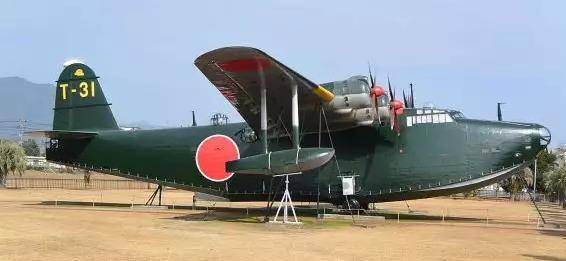
The actions of heavy multi-engine flying boats of the Japanese Imperial fleet during the Second World War - one of these topics. It partially helps that the Japanese had, without exaggeration, magnificent multi-engine seaplanes, the same Kawanishi H8K (aka “Emily”), the Americans themselves consider the best car in the class of everything that participated in that war. This slightly “saves” the situation by attracting a number of researchers, and gives us the opportunity to learn at least something on the topic.
And this “at least something” can lead us to very interesting conclusions for the future - even if this future is not ours.
In the peaceful sky of Oceania
Japan occupied the islands, now united as Micronesia, back in the 1914 year, with the beginning of the First World War. The archipelago belonged to Germany, and as an ally of Britain, Japan did not miss the chance to take their own.
In the future, its presence on the islands - both military and civilian, grew. But in order to ensure it, communications were needed, and more than one ship in three months.
The way to increase the connectivity of the Japanese possessions was the organization of air communications between the Japanese metropolis and the islands. This was all the more advantageous, which allowed a little later, to establish regular air links with Australia, or rather, to start with its territories in Papua.
In the thirties of the twentieth century, passenger hydroaviation, especially the American one, received rapid development. The reason for this was the undemanding of flying boats to the airfields - any calm harbor was an airfield. Given the need to incorporate into the single political and economic space a mass of island territories, the flights of flying boats were often the only alternative solution. In addition to the absence of problems with the basing, the flight range that was enormous for those times also worked in their favor - the massive hull of the boat usually allowed a large supply of fuel to be placed on board.
In the 1934-1935, the Japanese undertook several irregular test flights on various types of flying boats to Micronesia, the islands of which by then were a Japanese mandated territory. And in 1936, the first successful flight was made by a flying boat Kawanishi H6K. In her military version, she wore an index of "Type 97", and the pilots of the US Navy and allies knew this aircraft under the "nickname" Mavis (Mavis).
Since the advent of the crews of flying boats began to train in long-distance flights and reconnaissance. The planes were used to invade the airspace of the British territories, and, according to the Japanese, to put pressure on the USSR.
However, the huge range of "Type 97" was in demand for peaceful purposes.
The first operator of the "Type 97" was the Japanese airline "Airlines of Great Japan" - "Dai Nippon Koku Qais". Formally, civilian vehicles belonged, nevertheless, to the Imperial fleet, and a significant part of the aircrews were pilots of the naval reserve or simply personnel military.
"Type 97" and the atolls of Micronesia were literally made for each other. The aircraft, huge for those times, had at least a huge flight range - up to 6600 kilometers, and with a cruising speed that was quite decent for the 30s - 220 km / h. The atolls themselves, thanks to their annular form with a lagoon in the center, provided for flying boats an area protected from storms, convenient for landings and takeoffs - almost everywhere.
From the end of 1938, a couple of converted aircraft from the fleet aviation (the cars were rented) began flights on the route Yokohama-Saipan. Since the spring of 1939, a line has been added to Palau (the Caroline Islands). In 1940, the airline ordered ten more units, now not for rent, but for own use. By that time, Saipan, Palau, Truk, Ponepe, Jaluit, and even East Timor were included in the “geography” of civil flights. It was planned that flights will continue to Port Moresby. But the war did not allow these plans to materialize. But the lines Yokohama-Saipan-Palau-Timor, Yokohama-Saipan-Truk-Ponape-Jaluit and Saigon-Bangkok existed throughout the war and were "closed" only with the loss of territory.
But the main work "Type 97" did not in civil aviation.
Boats at war
The way the flying boats used the Anglo-Saxons and the Japanese were fundamental differences. The first main task of the aircraft was the detection of submarines operating on sea lanes. For this purpose, the aircraft were equipped with radars, and there were a lot of them themselves.
In Japan, the situation was different - they did not create a reliable and effective radar, they were unreliable and inefficient during the war, but they didn’t have enough resources to replicate, and there wasn’t enough resources for a mass series of flying boats either - the total number of built multi-engine boats of all types in Japan it did not even reach the 500 units. Against the background of the scale of production of Catalin alone (3305 machines), these figures did not look perfect. As a result, Japanese aircraft were deliberately useless against American submarines that deployed an unlimited underwater war in the style of Admiral Doenitz in the Pacific Ocean. During the entire war, Japanese heavy flying boats sank only seven submarines - funny figures. But they did something else.
From the first day of the war, the Japanese used their large seaplanes for the following purposes:
- patrol and reconnaissance. The planes were to detect the surface ships of the Americans and open the defense system of their bases to be captured.
- causing ultra-long bomb strikes.
- military transportation.
- destruction of single vessels and submarines.
- guidance to the target strike aircraft (at the end of the war).
It would seem - well, how can low-speed flying boats attack defended by fighters and numerous anti-aircraft guns of an air base?
But ... they could!
There are allegations that Type 97 was ready to attack American island bases on the same day that Kido Butai attacked Pearl Harbor, but the attack failed due to the inability of the Japanese command to contact aircraft and confirm the start of the war, which was required initial plan. However, they flew to the islands of Holland and Canton (as in American sources). And 12 December 1941 of the year, the air regiment (actually Kokutai, but the closest to the meaning was the air regiment) based on the Wautier Atoll carried out aerial reconnaissance of Wake Island - one of the first places where American troops fell under the Japanese blitzkrieg. 14 December, from the same place, with Votye, float fighters started, performed a successful raid. Supposedly, their pilots could receive information from the 97 Type reconnaissance aircraft.
December 15 flying boats themselves bombarded Wake and also successfully.
In the future, the practice of using flying boats as long-range bombers continued.
Since the end of December, 1941-th flying boats conducted reconnaissance around Rabaul, without loss.
In early January, 1942-th nine “Type 97” planes attacked the airfield of Wunakanau near Rabaul, destroying several Australian air force planes on the ground and damaging the drive and the runway. One of the fighters, the Australian "Wirreway" was able to take off and tried to catch up with the Japanese, but could not.
On January 16, the flying boats again attacked the airfield with fragmentation bombs and again went off without a loss.
In January, the 1942 Type 97 dropped a number of bombs on Port Moresby, with no significant effect. In the future, the raids of flying boats were mainly of reconnaissance nature.
However, the main task of flying boats was intelligence. So, it was the "Type 97" found the aircraft carrier "Lexington" 20 February 1942 of the year. In general, flights of flying boats on aerial reconnaissance gave the Japanese more than bombing raids, which rarely caused the enemy significant damage.
However, the raids continued.
At the end of 1941, the Japanese had a more advanced flying boat than the Kawanish H6K / Type 97.
It was a plane produced by the same company, Kawanishi, model H8K. The machine was codenamed "Emily" from the allies. In Japanese documents, it was designated as "Type 2". (Read more - "The best four-engine seaplane of the Second World War").
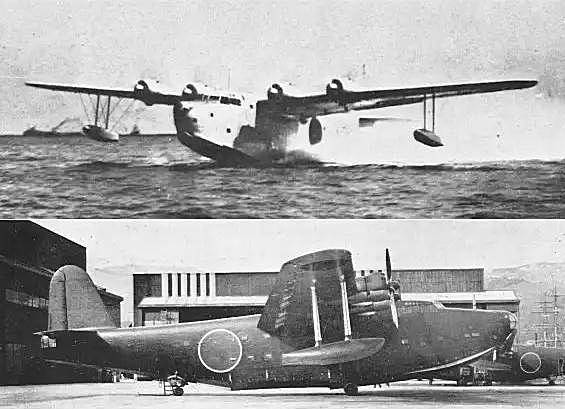

These aircraft, like the previous model, were used for bombing raids and reconnaissance. In addition, 36 machines were built as Seik's transport vehicles and were originally intended for the delivery of troops.
The first operation of the amphibians was a repeated raid on Pearl Harbor, the famous “Operation K”, conducted by 4-5 in March 1942 of the year.
The weather conditions were unsuccessful, but the plan was still impressive - the flying boats had to fly 1900 nautical miles from the Wotje Atoll in Japanese Micronesia to the French-Frigat-Sholz Atoll, belonging to the Hawaiian Islands. There, submarines were to refuel them, after which they were to attack the dock at Pearl Harbor, significantly complicating the repair of warships to the Americans. As a result, the Japanese did not succeed - only two of the five planes could fly, both of them dropped bombs due to bad weather.
The Americans, whose intelligence warned of a raid, sent a warship to the French-Frigat-Sholls - a tender of Ballard flying boats. The latter, being an obsolete converted destroyer, still posed a serious danger to seaplanes, and flights over the atoll ceased.
A few months later, one of the flying boats attempted to attack Midway. But by the time the Americans learned how to use their radar. The plane was shot down.
New aircraft, like the previous model, were actively used in Oceania for reconnaissance of island territories and long-distance bombing attacks.
We should also mention the participation of “Emily” in the operation on the Aleutian Islands. The Japanese widely used both flying boats and float fighters there, and when the evacuation of the Japanese troops began (Emily in the transport variant provided it, taking the soldiers by air) even the ship-tenders that provided the actions of the flying boats.
As the war came to an end, the operations of flying boats as bombers were continuously reduced, but the role of aerial reconnaissance grew. In this capacity, the aircraft suffered significant losses - the Americans used radars more and more widely, the exact performance characteristics of which were not known to the Japanese, and the huge multi-engined airplanes increasingly met with large fighter forces. Huge cars differed serious vitality and could stand up for themselves, especially H8K of various modifications, equipped with 20-mm guns, but the forces turned out to be unequal more and more often.
The crash of H8K by deck aircraft of the USA, real military shooting
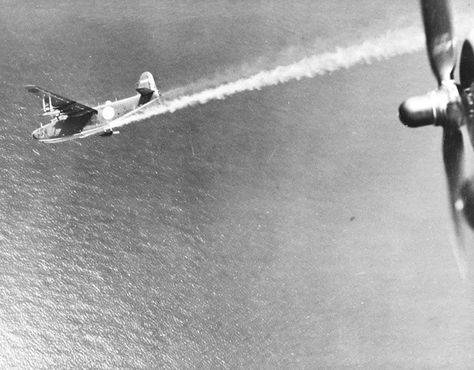
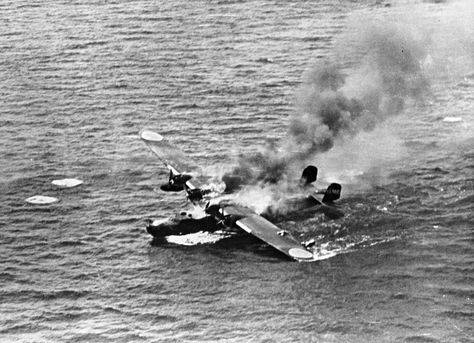
The last combat operations of flying boats were departures on target designation for suicide "one-way" attacks, carried out by ground-based bombers.
As for transport options, they were intensively used until the very end of the war.
Organization and conduct of combat operations
Flying boats were distributed by aviation compounds, called by the Japanese "Kokutai". The number of aircraft in the ground "Kokutai" was very different and changed over time. Known examples are from 24 to 100 machines.
As a rule, the entire administrative and command structure of the Kokutai was tied to its flight teams and aircraft and was transferred along with them.
The main operators of four-engine flying boats of both types were:
- 801 Kokutai. Basically was armed with "Type 97";
- 802 Kokutai. Until November 1942 th 14 th Kokutai. It was a mixed compound of heavy seaplanes and float fighters A-6M2-N, in fact - float "Zero". For a long time, the battles were fought mainly by fighters, but on October 15 1943, the fighter units were disbanded;
- 851 Kokutai (former Toko Kokutai). Formed in Taiwan as Toko Kokutai, November 1 1942 was renamed 851. He participated in the battle of Midway and one of the squadrons in the operations of the Aleuts.
Transport aircraft were also assigned to various ground bases of the Navy.
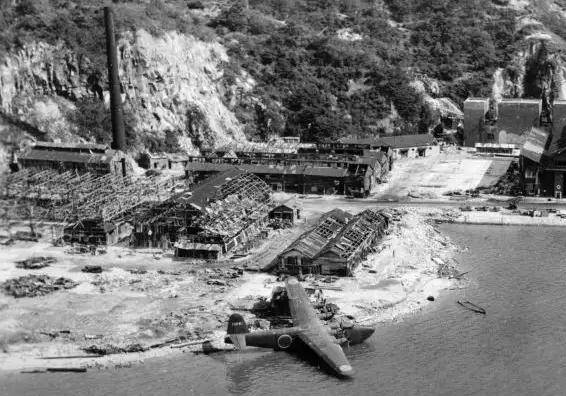
As a rule, airplanes were based in lagoons and calm creeks on islands. In the case of the 802 Kokutai, it was about co-basing with float fighters. At the same time, the Japanese did not build any permanent structures, crews and equipment lived in tents on the beach, all facilities for storing material and technical means were temporary. Such an organization allowed the Japanese to quickly transfer air units from island to island.
A separate method of ensuring the actions of flying boats was the use of the ship-tender. In the case of the multi-engine "Kawanishi" it was ship "Akitsusima"The technical capabilities of which allowed not only supplying the aircraft with fuel, lubricants and ammunition, but also lifting them with a crane to the deck out of the water and carrying out repairs, including complex ones, such as replacing engines.
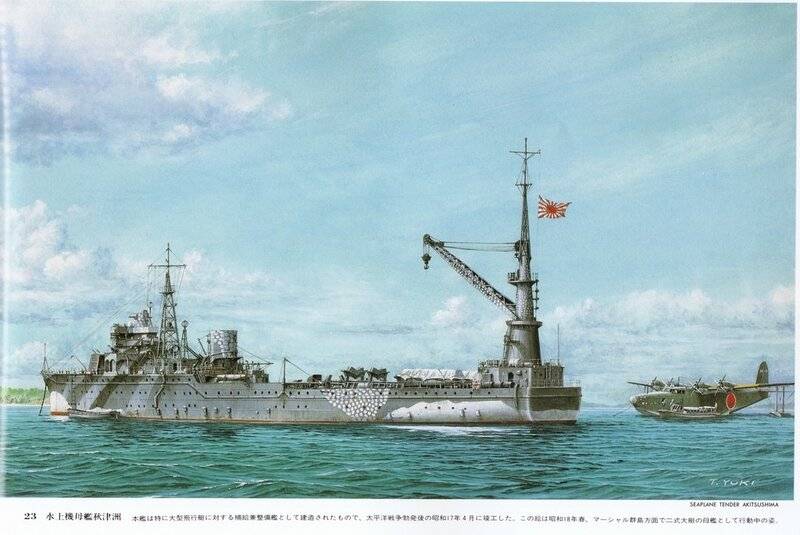
Opportunities "Akitsusyma" allowed to provide high-intensity combat use of eight aircraft. As such, the ship was used during the removal of Japanese troops in the Aleutian Islands, in which flying boats took an active part.
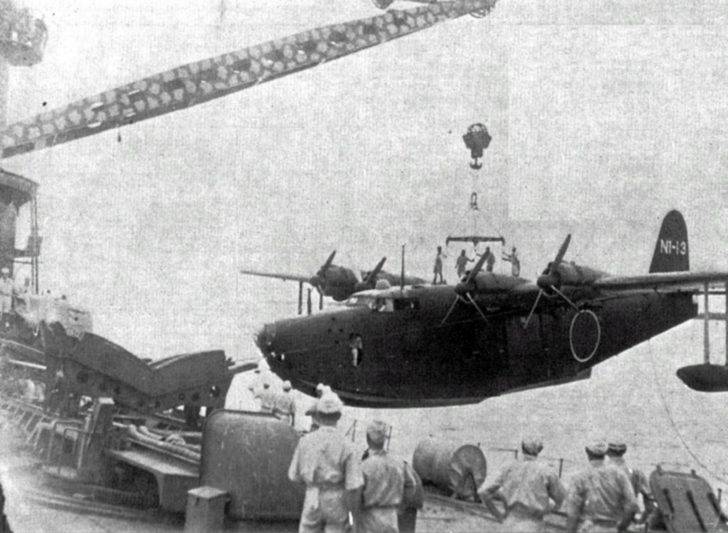
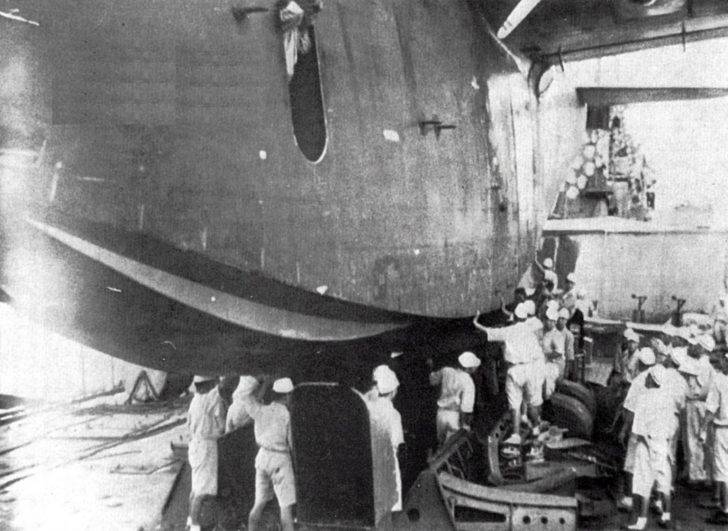
Active flights of seaplanes for reconnaissance from Marshall Islands and other islands in the Pacific ended in 1944, when the Americans literally “broke into the doors” of the Japanese island bases. The fact how long the flying boats could work against the Americans literally from under their noses cannot but evoke respect.
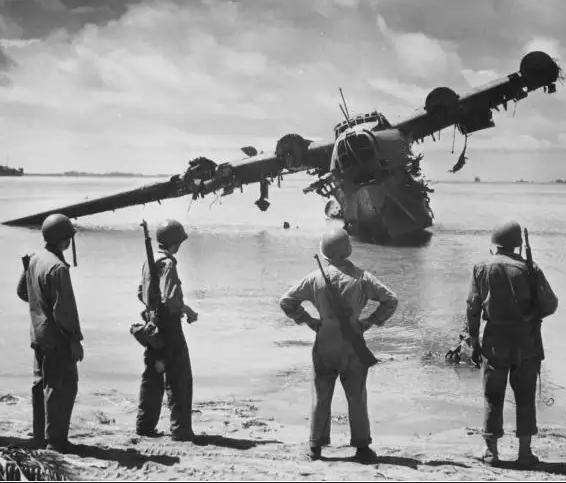
The war survived a very small number of Japanese flying boats. Only four of them were used by the Americans to study Japanese technology, all the other trophies that fell into their hands were destroyed.

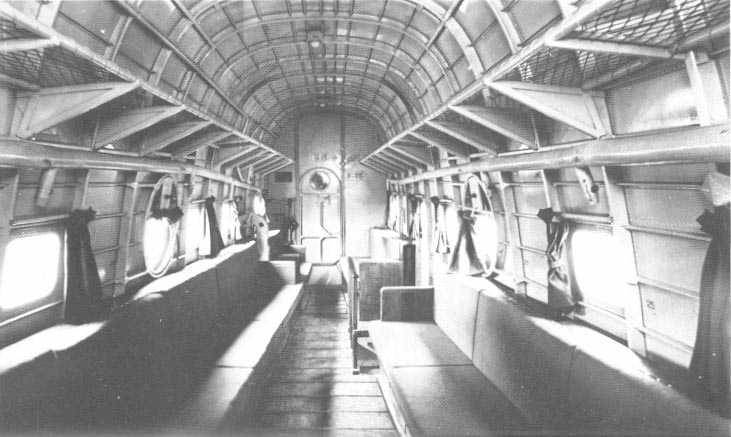
Of all the planes that fell into American hands, only one survived to this day, H8K2 from 802-th Kokutai. The car was preserved by a miracle, and even many decades after the end of the war, the Americans did not want to give it to the Japanese, nor did they want to restore it. But in the end, the plane was saved and after years of restoration is in the Museum of the Maritime Self-Defense Forces of Japan.
Lessons from the past
Mentally, our people do not view the war in the Pacific Ocean as “their own”, although firstly the Red Army finally inclined the Japanese to surrender, secondly we destroyed almost a third of its troops and carried out strategically important after-effects operations to seize the Kurils and South Sakhalin. It is hard to imagine what would happen if the fleet could not land landing forces on these territories, and the Americans would go there. In fact, in terms of territorial acquisitions, these are our most important acquisitions made in World War II, more important than even Kaliningrad.
Moreover, it is worthwhile to reject the psychological alienation towards events in the Pacific region, typical of many Russians, and carefully study the experience of the Japanese hydro-aviation.
War in regions with low communications density, such as mountains, archipelagoes, large wetlands, deserts with few oases, etc. it has its distinctive feature that control over individual, small points means de facto control over vast spaces. Had the Japanese, for example, taken Midway, and any landing operations for the Americans would have been much more difficult.
This implies the need to capture such points as quickly as possible, faster than a stronger enemy at sea can send a fleet or aircraft to capture them. The fastest means of delivering troops is aviation. She is also the most dangerous enemy of submarines, and with her help air reconnaissance is carried out over the sea. And do not be very afraid of shipboard air defense systems. Even old Soviet aircraft, such as, for example, the Tu-95K-22, could detect the included shipborne radar from a distance of about 1300 kilometers. Now the possibility of aviation is even higher.
But waging war somewhere in the Pacific Ocean, or other regions, with archipelagoes and small islands, any belligerent will face the lack of airfields. The fact that after World War II they were built in dozens of dozens did not change anything in the same Oceania - air strikes and cruise missiles quickly leave nothing on these airfields, and delivering building materials and equipment to the islands in the case of the Pacific Ocean does not look like a simple task. Yes, and in the Caribbean builders from Severodvinsk not lucky.
At this moment, the party that has the ability to use seaplanes will unexpectedly get a head start. Atolls have not changed since the forties of the last century. And the calm lagoon in the reef ring is still not uncommon. And this means that all problems with landing on water, which are inevitable companions of marine seaplanes, “unexpectedly” disappear - and waves that can break a glider or force an airplane to stay in place by engines, and logs or barrels brought to the landing site, which can penetrate the fuselage of even the strongest amphibians - all this becomes petty and solvable problems.
But the enemy has problems coming - no air reconnaissance, no satellite reconnaissance will be able to instantly provide information on the presence or absence of aviation on each of the hundreds and thousands of islands scattered across a dense network thousands of kilometers in all directions. Especially if this aircraft is constantly moving, throwing soldiers, equipment, supplies, taking out trophies and wounded. Stocks of expensive complex and high-tech weapons in a large non-nuclear war (and, for example, both the United States and China plan to wage a non-nuclear war in the future) will be quickly spent, and completely different things will start to matter.
For example, the opportunity for one side to send troops anywhere and quickly - and the absence of such an opportunity for the other side.
And the opportunity to start producing transport, anti-submarine and other amphibious aircraft in large quantities can also mean a lot to a third party - to the one that wants to stand aside while the first two find out the relationship, and declare for dismantling under a curtain - or just to earn on military supplies.
After all, ground-based airplanes benefit from flying boats in everything absolutely - but only when there are airfields. In a war where there are none, the logic will be different.
And this is the lesson that gives us the Japanese experience of the war on seaplanes, a lesson that is relevant even today.
Naturally, all this is true for warm latitudes, where there is no ice and less excitement at sea.
Also of theoretical interest is the hypothetical use of hydroplanes for strikes on the United States. Theoretically, Japan, using aircraft tenders could deliver flying boats close enough to US territory, so that they could attack the American territory itself from an unexpected direction, and (after that, let's apply here) - not with bombs, but sea mines.
Such operations could have a very interesting effect. After all, no matter how clumsy and large Japanese flying boats were, and their attacks on land targets were mostly lossless, and their effect was blurred only by the inability of the Japanese to correctly identify targets. In general, the boats flew suddenly and flew away without a loss, and so it was quite a long time. The island territories, which can be attacked from any direction and where it is commonplace to deploy defense in depth, were quite vulnerable to attack by any aircraft, even flying boats. It is also worth thinking about. As well as a similar never-implemented strategy "for the Americans."
In general, the Japanese flying boats could not have the same influence on the outcome of the war as similar Allied aircraft. But the experience of their combat use, of course, deserves to be studied in our time.
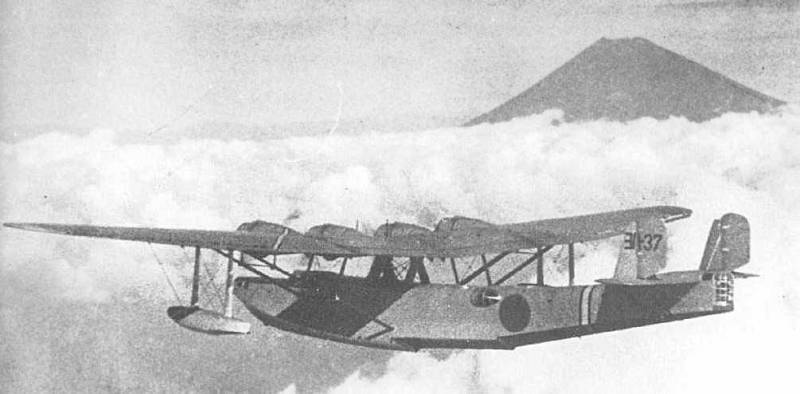
Information